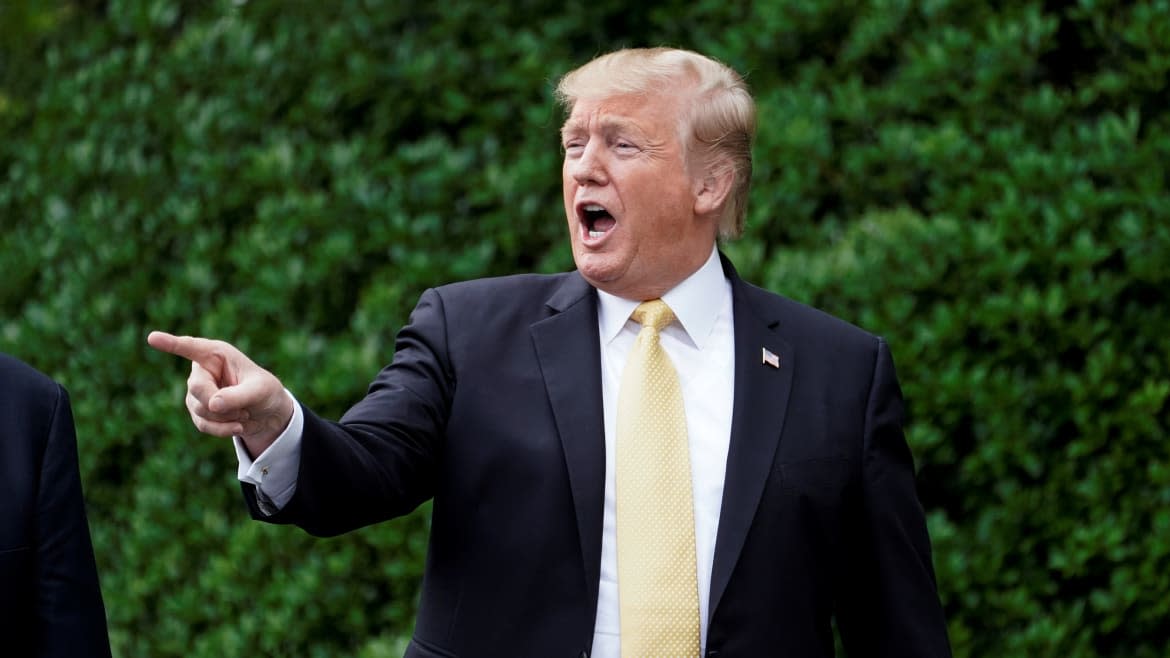Second Trump Ghostwriter Says He Was Lousy at Business, Bored, and Obsessed With Carpet Swatches

Two of Donald Trump's ghostwriters seem to be wracked with guilt about the fictional character they helped create that would go on to be president.
Tony Schwartz, who helped Trump write The Art of the Deal, has been a public critic for years. But a second ghostwriter has now come forward to spill the secrets of the Trump boardroom.
Financial records reported by The New York Times this week exposed the real Trump of the late '80s and early '90s—a reckless, failing businessman who lost more than $1 billion over a 10 years period.
At the same time as his failures, two book published under Trump's name—Surviving at the Top published in 1990 and The Art of the Deal in 1987—helped the future president create the utter illusion that he was one of the country's leading businessmen, boosting his national platform and setting him on the path to stardom in The Apprentice.
Now, in the wake of the Times report, the men who ghost wrote those books both feel complicit in the trick. Tony Schwartz, who helped Trump write The Art of the Deal, disowned the work, saying, “Given the Times report on Trump's staggering losses, I’d be fine if Random House simply took the book out of print. Or recategorized it as fiction.”
Charles Leerhsen, ghostwriter of Surviving at the Top, has written an account for Yahoo News about the time he spent observing Trump for the book. He paints a picture of a lazy, ill-tempered man who was out of his depth when it came to business. In fact, his main contribution to his businesses seemed to be choosing carpets.
Leerhsen wrote that Trump was neither terrified about the scale of his losses nor, as the president claimed Wednesday, carrying out a Machiavellian plan to make sure he didn’t have to pay income tax. He was just bored.
“Trump’s portfolio did not jibe with what I saw each day—which to a surprisingly large extent was him looking at fabric swatches,” said the ghostwriter. “Indeed, flipping through fabric swatches seemed at times to be his main occupation. Some days he would do it for hours, then take me in what he always called his ‘French military helicopter’ to Atlantic City—where he looked at more fabric swatches.”
According to Leerhsen, Trump's obsession with carpets and curtains appeared to stem from his lack of understanding of much more important business decisions. The writer recounted one decision Trump reportedly made that exposed his complete lack of ability as a businessman.
“One of his aides once told me that every room at the Plaza could be filled at the ‘rack rate’ (list price) every night and the revenue still wouldn’t cover the monthly payment of the loan he’d taken out to buy the place,” said Leerhsen. “In other words, he’d made a ridiculous deal. Neither he nor the banks had done the math beforehand.”
Not only does Leerhsen’s account of Trump make him sound incompetent, but also a compulsive liar and an angry man. He reportedly insisted Leerhsen include an “obviously made up” story in the book about how he was walking down the street and saw a completely naked woman.
Another story exposes his short temper and poor treatment of staff. Leerhsen recounted overhearing one side of a phone call between Trump and a low-level employee working as a receptionist. Trump was “purple with rage” and demanded to know why it took so long to answer to phone. “After bawling her out for a minute or two, he hung up abruptly, forgetting why he had called in the first place,” wrote the ghostwriter.
Summing up his time with Trump, Leerhsen wrote: “Except for an occasional passing look of queasiness, or anger, when someone came into his Trump Tower office and whispered the daily win/loss numbers at his Atlantic City casinos, he seemed to be bored out of his mind.”

